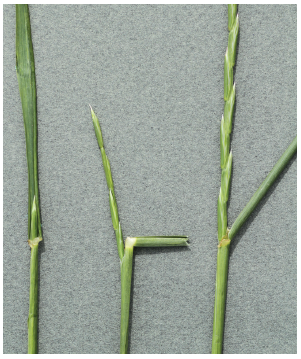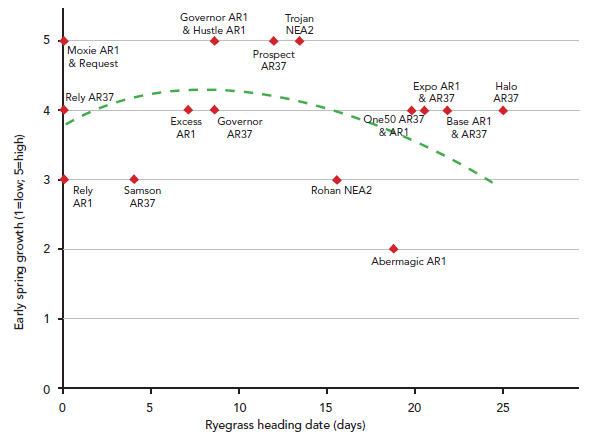Ryegrass heading dates & using them on farm
Heading date is when a cultivar shows seed head in spring. A late heading date can mean better late spring quality.
What is heading date?
Heading date describes when a grass cultivar has 50% of tillers with seed heads emerged in spring. It is also known as ‘ear emergence date’, (see photo below).
Day 0 is based on traditional cultivars such as Nui, which typically heads around 22 October in Canterbury. But this can vary by 2-3 weeks from year to year. A cold early spring delays heading, whereas a warm spring can bring it on earlier.
A +14 day heading date means a cultivar will a produce seed head 14 days later than Nui (Day 0).
For all ryegrass cultivar heading dates, see page 8 for perennial ryegrass, page 20 for long rotation, page 21 for hybrids, and page 27 for Italian and annual.
Heading dates of Barenbrug ryegrasses


USING RYEGRASS HEADING DATES ON FARM
As ryegrass goes to seed in late spring, stems develop, fibre levels rise and metabolisable energy (ME) drops as illustrated below. Late heading cultivars delay the start of seeding, thus maintaining animal intake and performance in November.
Advantage of late heading

Late heading & early growth
The first late heading ryegrasses in NZ had poor early spring yield, but this is no longer the case. Recent perennial ryegrass breeding means early spring growth and a late heading date can be combined in the same cultivar (e.g. Array). This is illustrated below with the DairyNZ Forage Value Index (FVI) cultivar DM performance values for 'early spring'.
Heading date vs early spring growth score (1-5) for FVI for upper North Island 2020

The green dotted line is our estimate of the general relationship. But the relationship between spring growth and heading date depends largely on the cultivar.

